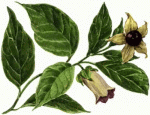Botany
|
17 december 2014 05:32:51 |
| Comparative analysis of carotenoid accumulation in two goji ( Lycium barbarum L. and L. ruthenicum Murr.) fruits (BMC Plant Biology) |
|
Tweet Background:
The traditional Chinese medicinal plants Lycium barbarum L. and L. ruthenicum Murr. are valued for the abundance of bioactive carotenoids and anthocyanins in their fruits, respectively. However, the cellular and molecular mechanisms contributing to their species-specific bioactive profiles remain poorly understood.
Results:
In this study, the red fruit (RF) of L. barbarum was found to accumulate high levels of carotenoids (primarily zeaxanthin), while they were undetectable in the black fruit (BF) of L. ruthenicum. Cytological and gene transcriptional analyses revealed that the chromoplast differentiation that occurs in the chloroplast during fruit ripening only occurs in RF, indicating that the lack of chromoplast biogenesis in BF leads to no sink for carotenoid storage and the failure to synthesize carotenoids. Similar enzyme activities of phytoene synthase 1 (PSY1), chromoplast-specific lycopene ?-cyclase (CYC-B) and ?-carotene hydroxylase 2 (CRTR-B2) were observed in both L. ruthenicum and L. barbarum, suggesting that the undetectable carotenoid levels in BF were not due to the inactivation of carotenoid biosynthetic enzymes. The transcript levels of the carotenoid biosynthetic genes, particularly PSY1, phytoene desaturase (PDS), ?-carotene desaturase (ZDS), CYC-B and CRTR-B2, were greatly increased during RF ripening, indicating increased zeaxanthin biosynthesis. Additionally, carotenoid cleavage dioxygenase 4 (CCD4) was expressed at much higher levels in BF than in RF, suggesting continuous carotenoid degradation in BF.
Conclusions:
The failure of the chromoplast development in BF causes low carotenoid biosynthesis levels and continuous carotenoid degradation, which ultimately leads to undetectable carotenoid levels in ripe BF. In contrast, the successful chromoplast biogenesis in RF furnishes the sink necessary for carotenoid storage. Based on this observation, the abundant zeaxanthin accumulation in RF is primarily determined via both the large carotenoid biosynthesis levels and the lack of carotenoid degradation, which are regulated at the transcriptional level. |
| 96 viewsCategory: Botany |
 Monochromatic light increases anthocyanin content during fruit development in bilberry (BMC Plant Biology) Monochromatic light increases anthocyanin content during fruit development in bilberry (BMC Plant Biology)The chickpea genomic web resource: visualization and analysis of the desi-type Cicer arietinum nuclear genome for comparative exploration of legumes (BMC Plant Biology) 
|
| blog comments powered by Disqus |
MyJournals.org
The latest issues of all your favorite science journals on one page
The latest issues of all your favorite science journals on one page



